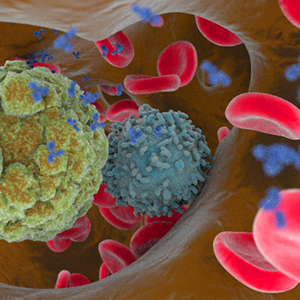 Summary written by Czeslaw Radziejewski, Ph.D.
Summary written by Czeslaw Radziejewski, Ph.D.
Antibody Engineering & Therapeutics, held in December 2022, offered many opportunities to hear exciting and informative presentations by experts in the field, including K. Dane Wittrup, Professor of Chemical Engineering and Biological Engineering, Koch Institute for Integrative Cancer Research at the Massachusetts Institute of Technology, who discussed “Intratumorally Anchored Cytokine Therapy”.
As a result of advances in interventional radiologic, endoscopic, and laparoscopic procedures, most cancer tissues can now be accessed for a local injection directly into the tumor, with the aim of triggering an immune response that will act globally against cancer. Because of their anti-tumor activity and synergistic behavior, cytokines such as IL-2, IL-12, and interferons are currently considered for intratumoral therapies. Cytokine exposure is spatiotemporally programmed during immune responses, which means cytokines are present at certain places at certain times and in a particular order. As therapeutic agents, optimally they should be supplied in particular tissues at particular times for a specific duration. Direct cytokine injection into tumors has been attempted, but this approach was previously unsuccessful because of leakages out of the target tissue and systemic toxicity.
In his presentation, Prof. Wittrup described two strategies to localize cytokines to the target tissue that could allow for efficacious levels to be reached without overall toxicity. Both methods take advantage of retaining cytokines at the site of injection through interaction with collagen. [1,2,3] One approach relies on anchoring cytokines to the collagen-binding extracellular protein Lumican and the other relies on anchoring cytokines to the vaccine adjuvant Alum (aluminum hydroxide). Alum forms clusters of nanocrystals that are positively charged, which, when injected, tend to stay at the injection site. Because phosphorylated proteins bind very strongly to Alum, cytokines are fused to a proprietary peptide called alum peptide. The construct is co-expressed with kinase Fam20C, which attaches multiple phosphates to the peptide. Phosphorylated cytokine is then mixed with Alum and injected into the tumor site. Lumican binds to collagen type 1 and type 4, and Alum binds to collagen type 1. Lumican anchored molecules stay in place for 2 to 3 days. Alum anchoring increases tumor exposure to more than three weeks.

